|
TURF-TEC FOR GOLF COURSE SUPERINTENDENTS |
|
By: John Mascaro Volume 9 Number 2 – August 2003 |
In this issue:
Editor's notes
Well summer is here in full swing. I know everyone is busy at this time of year with summer renovation projects in the south and play in full swing up north. To be sure, growing turf is a trying profession, especially during periods of summer stress. It is also during these extreme times that the superintendent and sports turf manager really earns their salary. And let’s face it; the turfgrass profession is often a thankless job. Coach Don Strock, (Florida International University) and former Miami Dolphin once said in a speech that he gave to our Sports Turf Chapter that the only time anyone looks for the turfgrass manager is when something is wrong. If a sports turf area or golf course is perfect, nobody says much, however if there is a small dead area of turf, everybody knows about it and is complaining.
In my opinion, people do not get into this industry if they demand high praise. This is an industry of people who strive to be the best, not for praise, but for self satisfaction. I know that when I am standing on a turfgrass area that I have taken care of and it has been freshly mowed and looking like an emerald green carpet, I can really hold my head up high. Even though nobody is there to say "good job" or "this looks great", it is more of that inner feeling of doing the best job that you can do.
We are truly an industry of people who gain from self satisfaction, and we are an industry of self motivators. We all seek out learning opportunities and additional classes or seminars to better our understanding of the land that we are charged with caring for. We read trade publications and research reports and informative newsletters like the Turf-Tec Digest J
on our own time. Often we even have to explain ourselves to our employers and justify the reason why we need to attend
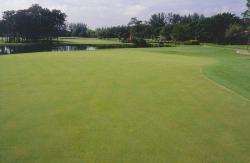 trade shows and conferences. In fact, it is often a struggle to be able to convince our supervisors for the need to allow us to break away from our usual routines and take time to learn more about what we do and how to do it better.
trade shows and conferences. In fact, it is often a struggle to be able to convince our supervisors for the need to allow us to break away from our usual routines and take time to learn more about what we do and how to do it better.
So this "Editors Notes" is devoted to you, the Golf Course Superintendent and Sports Turf Manger. I will be the one to say thank you and job well done! Just know that you are among a group of elite people who are happy to live with self satisfaction, because in reality, happiness comes from within. I really think we are way ahead of most people because we have already figured out we do not need validation from outside sources, we know when we have done a good job and when to be proud of ourselves and our turf.
Spring and Fall Aerification!
Well it’s been 57 years since my father invented the Aerifier, and when are the majority of people aerifying? In the spring and fall. With turfgrass sporting events high demand for the best possible playing surface, aerification has taken a back seat to what I call a turfgrass cultural quagmire. With aerification being the most destructive maintenance that is preformed on turfgrass areas, it’s no wonder it is so hated. With loud, roaring mechanized machines that are designed to push hollow steel tubes into perfectly flat golf greens and baseball infields. These mechanized monsters then claw and rip cores of soil out of the ground, leaving behind open holes and soil cores, laying on the surface like refuge, left on the street after Macy’s Thanksgiving Day parade.
However, without aerification, soil compaction increases, infiltration decreases and turfgrass health declines, thus causing the turfgrass cultural quagmire. Without aerification, all sorts of turfgrass disease become rampant. Diseases like Black Layer, Anthracnose, Pythium root dysfunction, Summer Bentgrass Decline, Summer Patch, Basal Stem Rot Anthracnose, Bentgrass Dead Spot and Gray Leaf Spot are all prime examples. When researching all of these diseases, the word "Aerification" is always mentioned as a way to avoid them. However, I never see "only aerify in the spring and in the fall".
My fathers’ favorite expression was that "mold doesn’t grow on dry bread". This is exactly what is happening with many turfgrass diseases. Soil infiltration is slow, so root zones are remaining wet for long periods of time. When disease spores land on that environment, presto, we have disease. Too often the whole disease diagnosis is much too complex. Often times more then one disease is present on a turfgrass area in decline. This is because the turf is sick and weak and susceptible to many diseases, both primary and secondary.
Getting back to spring and fall aerification, is twice a year enough to aerify? Sure, in some instances and soil types. However be sure you are monitoring infiltration with an Infiltrometer to justify how often you need to aerify. Remember a 10% decrease in infiltration is when it is time to aerify, not just in the spring and fall.
Now, how does aerification eliminate the 10% decrease in infiltration that has occurred? The original Aerifier had 1" spoons on four inch centers. The reason for this was my father found that if you make a one inch hole in compacted soil and leave it open, the surrounding soil will expand into the hole and compaction will be relieved about two inches on either side of the hole. If the one inch holes are spaced every four inches, compaction is relieved over the entire soil area. However, now we are using ¼" mini tines, solid tines, quad tines and not leaving the holes open, but stuffing them full of sand topdressing. Is it helping to aerate the soil? Perhaps, but just remember, if you are not monitoring your infiltration, do you really know what you are accomplishing?
Here is an excerpt from an article in DISEASES OF BENTGRASS ON HIGH-SAND-CONTENT GOLF GREENS, by Leon T. Lucas, North Carolina State University.
"Deep root systems usually develop in the sand mixtures during the fall and spring but decline severely during the summer. The first above ground symptom associated with the root decline is yellowing of the grass. The turf continues to decline and becomes weak and thin and may die in late summer. This condition is often referred to as black layer or Pythium root rot, however, the name summer decline seems more appropriate since a number of factors have been associated with the problem."
"The growth of algae is favored by wet soils which produce substances that interfere with the movement of water in sandy mixtures. The algae contribute to the development of anaerobic conditions. The best management practices to avoid anaerobic conditions, black layer and algae problems are to irrigate carefully and to aerify the greens as often as needed."
Product Tie in:
Infiltrometer – Tells soil infiltration rate and when to aerify.
Such a deal!
I have to admit that the advertisement of a "sale" is really getting out of hand. The American public cannot be so incredibly gullible that they believe that a $50.00 shirt can be sold on sale for $24.99 and still be profitable to the store. Let’s face, it the shirt costs $25.00. I do not care what someone tries to tell me about things on ‘sale’, the fact of the matter is the price is the bottom line. The other day my wife told me she had saved $120.00 buying things on sale. All I know is that it cost me $300.00 to save that $120.00! I am the kind of person who likes to call an apple an apple, not an organically grown Macintosh. This leads me to other advertisements in the turfgrass world. Here are some quotes from advertisements in last month’s issue of a nationally known turfgrass magazine.
"you cant loose"
"so you know what to expect"
"reduce your summer stress"
"better performance"
"turf protection"
"solve your toughest problems"
Let’s face it, I know we cannot believe everything we read, but I would like to believe some of the things I read. With the proliferation of advertisements in the world today, I only wish that solving turfgrass problems were that easy. Too often, we treat the symptoms of a problem, and do not look at the real cause. Take the above article on disease, sure I have Anthracnose, and I know what to spray to begin the road to turfgrass recovery, but the real question is, why did I get it? I like to challenge all my readers out there to look beyond the glitzy advertisements and sale slogans and get back to the real question, why is this problem occurring? Many times the simplest answer is often the best. Well I must go now, I hear that the local fast food restaurant is selling $4.00 hamburgers for only $1.99; I need to go save some more money.
Looking Back.
The below segment is from my fathers publication the "West Pointers". He wrote the "West Pointers" from June 1946 through December 1955. It was the newsletter for his company, West Point Products. The below excerpt is from the first issue.
Man likes to think of himself as a clever creature, but for all his ingenuity he probably has very few original ideas. Much more often he borrows ideas from Nature. It is doubtful if men would have thought of flying, though men did think of imitating the method of transportation employed by birds. Likewise, though it is probable that you never intentionally imitated an earthworm (we are quite sure we haven’t), the idea of top-dressing land was originated neither by you nor by us, but by the earthworm. Certainly, earthworms are not the only thing from which man might borrow the idea of top-dressing. Long ago the Egyptians were aware of the greater fertility of land that had been top-dressed by the flood waters of the Nile. Inasmuch as the facts about ancient Egyptian civilization are well-known, we prefer the story of the earthworm which is, we believe, less familiar and therefore, more interesting.
Although the earthworm is considered undesirable on greens and well-kept lawns because it methods leave a humps’ surface; the lowly worm is one of Nature’s provisions for soil structure. Moreover, earthworms are raised commercially and sold to farmers in this country and abroad. This worm-raising is a serious and exacting business. The culture beds must be kept at the proper temperature and degree of moisture to ensure the health of the worms. The worms are fed a varied
and well-balanced diet to provide them with a sufficient amount of vitamins and minerals, and also, an adequate supply of calories.
Worms of about two or three months of age are best for garden work. They are shipped in cartons packed with soil and peat moss. Sometimes when it is necessary for the worms to be shipped for great distances, they are sent in an odd form—capsules. This is possible because of the reproductive processes of the worms. The sexes are combined in each worm, yet the eggs of one are fertilized by another. As the ends of the two worms come together, a mucous ring forms around the body of each. Several eggs are deposited in this ring, which also contains matter to nourish the embryo worms. The ring solidifies, and is slipped off the earthworm. After three weeks, the worm emerges from the capsule fully formed. The newly hatched worms can adjust themselves to foreign soils more easily than can the adult worms.
The earthworm benefits the soil in two ways, its foot deep burrows admit air and water to the soil, and as mentioned before, it does a fine job of top-dressing. The earthworm has a gizzard-like digestive apparatus which grinds the soil and dissolves mineral matter. The worm digests organic matter and even small pebbles, changing this food into fine, rich soil which is excreted on the surface of the ground.
Worms have no teeth or biting equipment, but suck in their food. It is surprising that by this means they can devour not only soil, but also, hearty victuals such as straw, coffee grounds, shells and leaves. When the worms find food that is too large or too tough, they moisten it with a secretion from their mouths which causes the food to ferment.
It has been shown that 53,000 worms in an acre can cover the surface with three inches of soil in fifteen years. We do not feel inclined to calculate the exact number of worm-hours which would be required to top-dress a green, but have presented the figures in case some ambitious person would like to work it out. If the time is too great to be practical, you may count upon our Special Top-dressing mixture to supplement the work of the worm.
One for the funny bone.
This is an actual sign, I am not sure if this is the guy’s in the parks and recreation industry poking fun at golfers or not, however you can purchase one for yourself at http://www.u-neak.com/golf_course_pee.htm (They cost $9.95)
August is Soil Profile Awareness Month.
Well August is here and most people do not realize it but its Soil Profile Awareness Month. This is a national month designated to promote awareness of your soil profile. Many people know the soil profile is there; just lurking under the lush blanket to turfgrass, however, out of site, out of mind is often the case. That is why Soil Profile Awareness Month has been created, to set aside a month (for all those clock watchers) to promote the taking end examining of the soil profile. In fact, for the
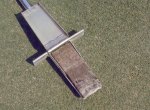 whole month of August, I will offer a 10% discount off our most popular tool, the Mascaro Profile Sampler in honor of this occasion.
whole month of August, I will offer a 10% discount off our most popular tool, the Mascaro Profile Sampler in honor of this occasion.
Product Tie in:
Mascaro Profile Sampler – The best soil profile in history!
National Do Not Call Registry.
Well are you tired of telemarketers calling you at home? Well enough people were that the federal government finally has been pressured into taking action. The National Do Not Call Registry is a free service run by the Federal Trade Commission (FTC) and by putting your number on the list, it will reduce the sales calls you get at home.
Their site it states "The National Do Not Call Registry" is open for business, putting consumers in charge of the telemarketing calls they get at home. The Federal Government created the national registry to make it easier and more efficient for you to stop getting telemarketing sales calls you don't want. You can register online at WWW.DONOTCALL.GOV if you have an active email address. You can call toll-free, 1-888-382-1222 (TTY 1-866-290-4236); from the number you wish to register. Registration is free.
The Federal Trade Commission, and the states will begin enforcing the National Do Not Call Registry on Oct. 1, 2003. That's when consumers who put their numbers on the registry by August 31, 2003 will notice a downturn in the number of telemarketing calls they get. Placing your number on the National Do Not Call Registry will stop most, but not all, telemarketing calls.
Most telemarketers cannot call your telephone number if it is in the National Do Not Call Registry. You can register your home and mobile phone numbers for free. Your registration will be effective for five years.
You can register online at http://www.donotcall.gov or call (888) 382-1222 from the phone number that you want removed, I know that I did!
Comments on Photo Quiz in Golf Course Management Magazine.
I have gotten some nice feedback on the quiz, here are two comments: Sent with a photo: "I thought I would pass it on as I review the photo quiz in every issue and believe most will misdiagnose." Mike Ridout, Superintendent, Four Seasons Resort, West Indies.
"Love the photo quiz." Mark Van Lienden CGCS
If any of my newsletter readers ever come across anything different or out of the ordinary, please let me know. If I use the photograph in the magazine, you will get full credit! You can send photographs to: John Mascaro, 3669 NW 124th Avenue, Coral Springs, FL. 33065 or email to john@turf-tec.com
STMA - Sports Turf News
New Logo for STMA.
The Sports Turf Manages Association has a new logo for the association. They felt the logo is easier to read and the cleanliness makes it look more professional. Below is the new logo.
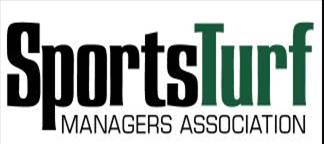
Start Planning now for the STMA National Conference and show.
The STMA National conference and show will be in San Diego, CA in January, 2004. The exact dates for the STMA's 15th Annual Conference & Exhibition are January 21 - 25, 2004. For updates go to the STMA website at http://www.sportsturfmanager.com/
New Tagline for STMA
"STMA: Experts on the Field, Partners in the Game"
The tagline takes an everyday phrase "an expert in the field" and plays upon it to get across that STMA members are the absolute "experts" both in the field of sports turf and on the playing field and field management issues. "Partners in the Game" portrays the professionalism, and positions STMA members on equal footing with others in the organization or athletic department. The tagline is a catchy, easily recognizable phrase to be used for marketing purposes.
Public Relations Positioning Statement
"The sports industry can count on the healthiest and safest playing fields because sports turf managers are unequaled in expertise and professionalism."
STMA Members Forum.
There is a new feature on the Sports Turf Managers website called the "Members Forum". This question and answer forum is for members of the STMA National and is an excellent way to get questions answered and also find out what works for other sports turf managers. To find the forum, go to the website at http://www.sportsturfmanager.com and then click the tab in the upper right corner to logon. Once you have logged on you should go to # 2 in the STMA Top Five called "Member Forum Q & A".
GCSAA - Golf Course News
2004 GCSAA Conference and show
Golf Course Superintendents Association is already planning its 2004 Conference and show for February 2004. The GCSAA Conference and Show will be in San Diego, California on February 9-14th, 2004. Start planning to attend today as hotels fill up fast. The website is http://www.golfcourseshow.com/ Registration will open in Sept. 2003 for members and Oct. 2003 for non-members.
Golf Course Management Magazine available online.
Golf Course Management Magazine is available online. If you want to read articles in Golf Course Management from your computer, it is available online each month at: http://www.gcsaa.org/gcm/gcm_fr.html However if you want to see the photo quiz, you still need to get the magazine! You can subscribe on the GCSAA website at: http://www.gcsaa.org/gcm/gcm_fr.html or the magazine is free with your paid membership.
2004 GCSAA Excellence in Government Relations Awards applications now available:
Nominations are now being accepted for the GCSAA 2004 Excellence in Government Relations Awards. The EGR Awards recognize GCSAA members and chapters for their efforts and accomplishments in the areas of advocacy and compliance.
The form is available at http://www.gcsaa.org/gcm/gcm_fr.html
Turf-Tec website news and Turf-Tec in the news.
Year in Review Pictures Updated
I have again updated my "Year in Review Section" of my website by adding 27 more photographs of interesting places and of course soil profile samples. These pictures span from March 2003 to June 2003. http://www.turf-tec.com/year03-03.html Some of the places shown are as follows:
Crandon Park Golf Course, Key Biscayne, FL.
University of Florida Field Day, IFAS, Ft. Lauderdale, FL.
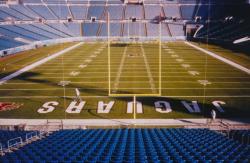 Alltel Stadium, Jacksonville, FL, home of the NFL Jacksonville Jaguars.
Alltel Stadium, Jacksonville, FL, home of the NFL Jacksonville Jaguars.
Jacksonville Baseball complex, home of the AA Jacksonville Suns
Ft. Lauderdale Stadium, spring training facility of the Baltimore Orioles.
Lockhart Stadium, Ft, Lauderdale, FL.
Roger Dean Stadium, Jupiter, FL. Spring training facilities foe the St. Louis Cardinals and Florida Marlins
University of Alabama, Tuscaloosa, AL. Football stadium.
University of Alabama, Tuscaloosa, AL. Baseball and softball stadiums.
I am sure you will enjoy these new photographs. If you have never seen my virtual photo tour, I invite you to take the tour, am sure you will enjoy it. The photo's date from 1999 to present and have many different areas and events I have been fortunate enough to see and photograph. There are over 150 photographs and descriptions to match each one.
Online Ordering
Turf-Tec International offers secure online ordering on our website for those of you that want to pay for orders with credit cards. We accept Visa, MasterCard, Discover and American Express. To try this feature out click here: http://www.turf-tec.com/orderform.html
Find anything on my site!
Since I now have over 125 pages of information, photographs, tours and product literature on my website, I have added a search engine tool on my site. Simply click here http://www.turf-tec.com/searchsite.html or the box that says "Turf-Tec Search" that appears on every page and type the words that you are looking for. The results will be listed in order of relevance in a list form.
Contributions to this publication.
I also want to invite all of you recipients of this newsletter that if you wish to contribute any information that you find interesting or exciting, please send it to me and I will include it along with crediting its source.
Also, if you know another Golf Course Superintendent or Sports Turf Manager that would like to receive the Turf-Tec Digest, have them forward their email address along to me. In addition, I get most of my new product ideas from Golf Course Superintendents and Sports Turf Managers who see a need in the industry that has not been filled. Be sure to look at the new product section on my web site for new additions. http://www.turf-tec.com/Map.html
![]()
Privacy policies.
If you received this newsletter directly from john_mascaro@turf-tec.com, don’t worry. I personally acquired your name by researching each golf course and sports facility individually. In addition Turf-Tec does not buy, sell, trade or share their mailing list with anyone. We also have taken security measures to insure that your name will not be passed along to other people. If, however you still do not want to receive this newsletter, simply respond to this email with the words "remove" in the subject line and your name will be permanently deleted from our list.
![]()
If you have not received your new free 2003 Turf-Tec Catalog call us.
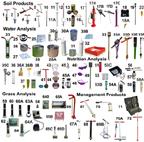
Our toll free (800) 258-7477 or email me at john@turf-tec.com or fill out the online form at http://www.turf-tec.com/form.html
![]()
1471 Capital Circle NW, Suite # 13
Tallahassee, FL. 32303
Order Line (800) 258-7477
Phone (850) 580-4026
Fax (850) 580-4027
Home / Search Site / Catalog
/ Online Ordering / Map of site / Newsletter
On line consult / Contact us
History / Web Designs / Request Catalog /
Search Engines
Copyright 2003